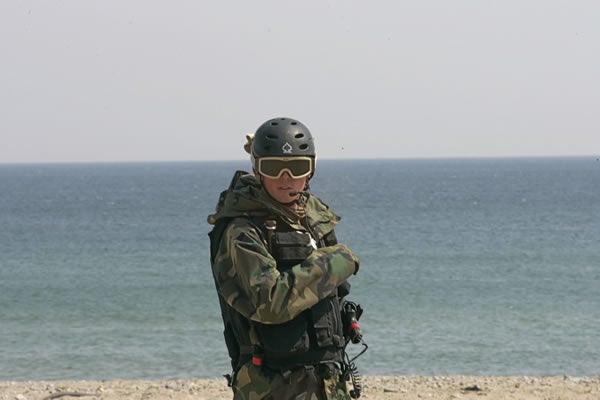The United States and Japan released a revised deployment plan for U.S. Marine Corps forces in the Pacific. It is an improvement over the 2006 Guam Agreement, but it still sacrifices alliance military capabilities for political expediency.
The new plan is more flexible and operationally focused, since it maintains Marine Air Ground Task Forces rather than dividing Marine combat, command, and logistics components. But moving Marine units further from potential conflict and humanitarian disaster zones only makes them more vulnerable to the tyranny of distance endemic in the Pacific theater.
The Marines already face a shortage of critical lift and mobility assets to fulfill their missions and privately grumble that the Navy shows no inclination to provide it. The Marines identified a need for 38 ships, the Navy provided 33, and the number has since dwindled to below 30.
The Darwin Initiative—in which up to 2,500 Marines will rotate through training areas in Australia—is an excellent strategic move to affirm U.S. commitment to defending allies and partners in Southeast Asia. But the Pentagon continues to struggle in determining how it will “globally source” the manpower requirements. Without sufficient mobility assets, the U.S. risks stranding the Marines down under, unable to get into the fight over the horizon.
A mobility shortfall in the Pacific is just one of the critical degradations of U.S. military capabilities that are already taking place due to massive defense budget cuts. And the shortfalls are only going to get exponentially worse under sequestration—a fiscal train wreck that the White House and Congress are ignoring.
Defense Secretary Leon Panetta appears to have simply thrown in the towel: “We have made no plans for a sequester because it’s a nutty formula, and it’s goofy to begin with, and it’s not something, frankly, that anybody responsible ought to put into effect.”
Nor does the new Pacific realignment plan do more than pay characteristically weak lip service to making progress on the Futenma Replacement Facility for relocating a Marine air unit. Japan hopes providing yet another in a long series of concessions will reduce Okinawan resistance to the base. While Tokyo has increased its payouts to Okinawa, it is the U.S. that has had to repeatedly degrade its military capabilities, which are in place to protect Japan and maintain peace and stability in Asia.
In a reversal of the proud traditions earned by the U.S. Marine Corps in World War II, the devil dogs now find themselves being driven backward all the way across the Pacific—not by superior forces but by political compromises.
